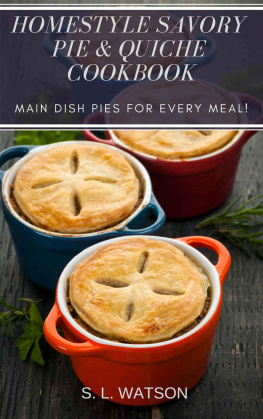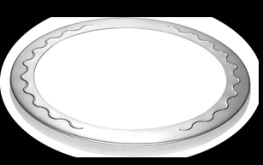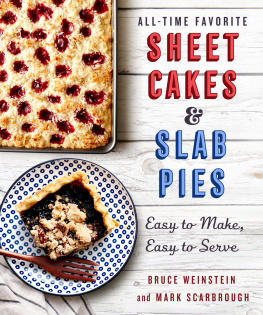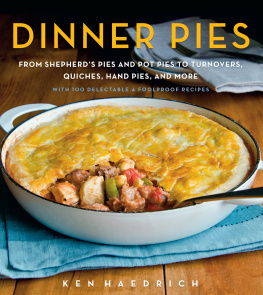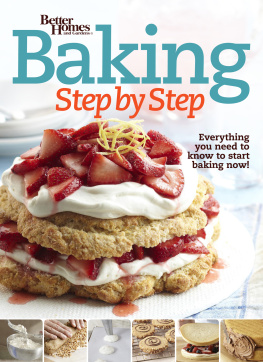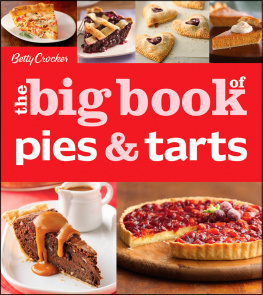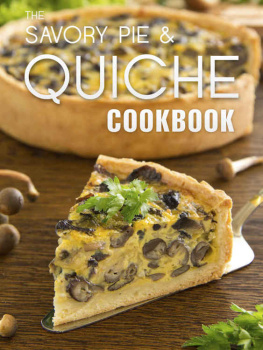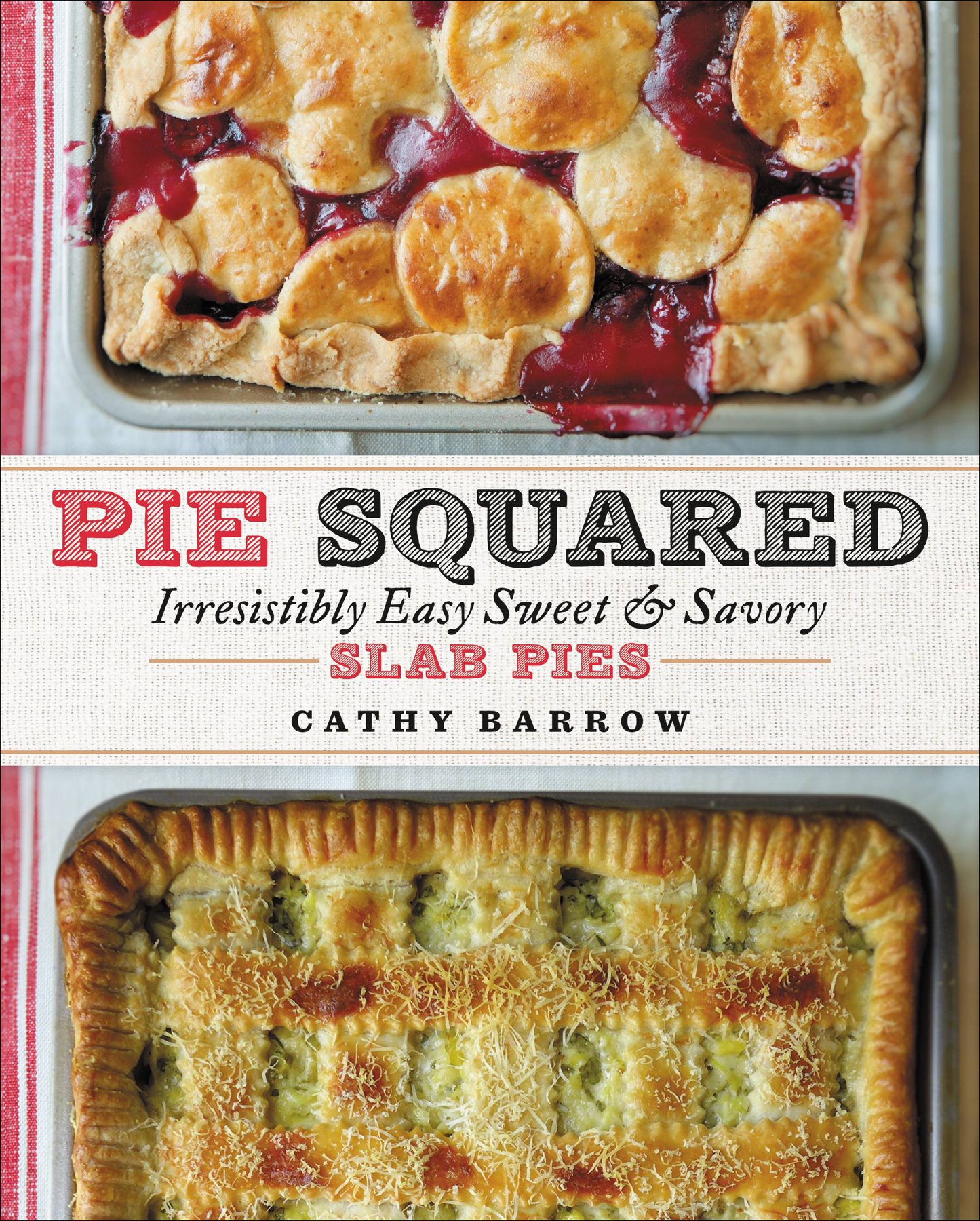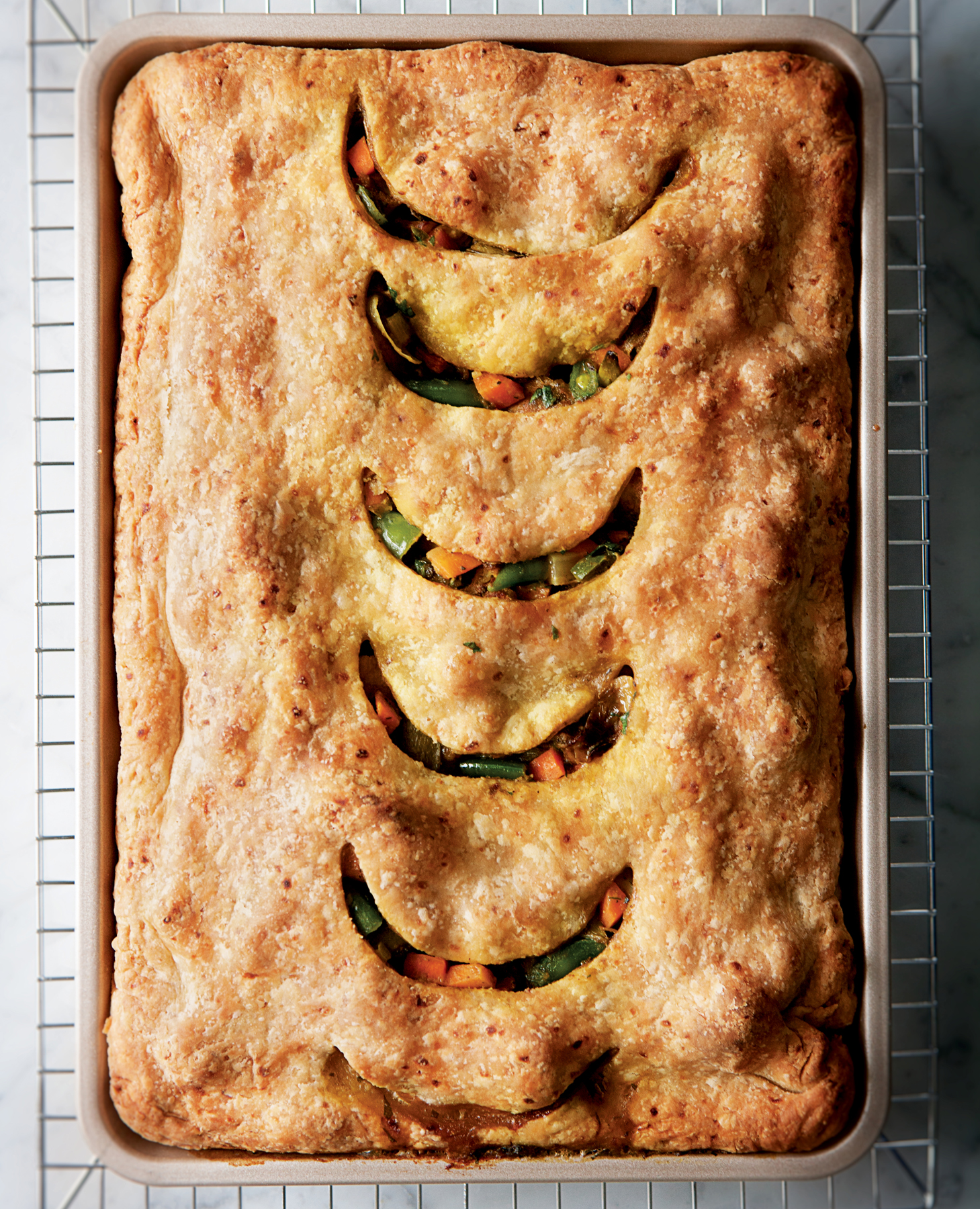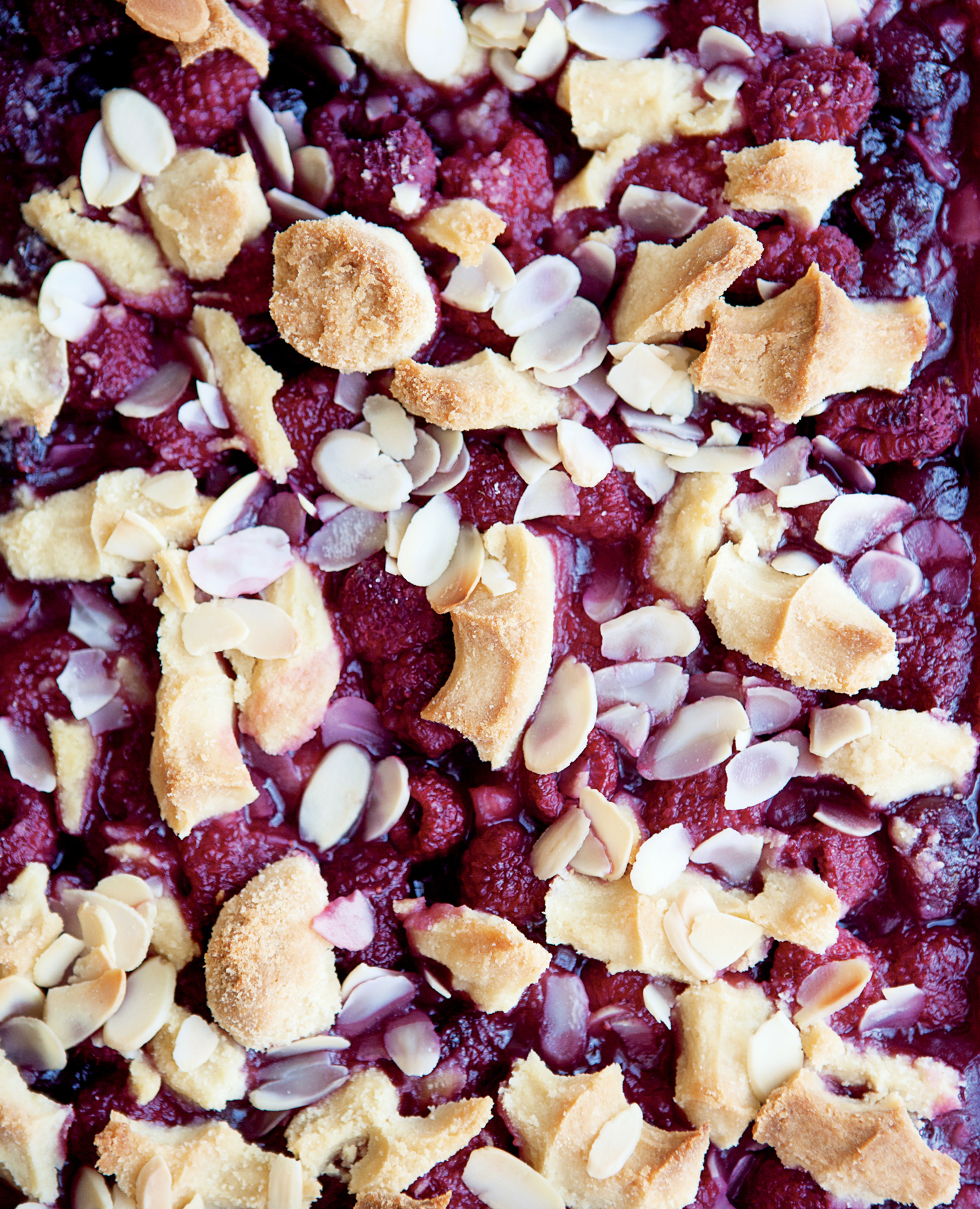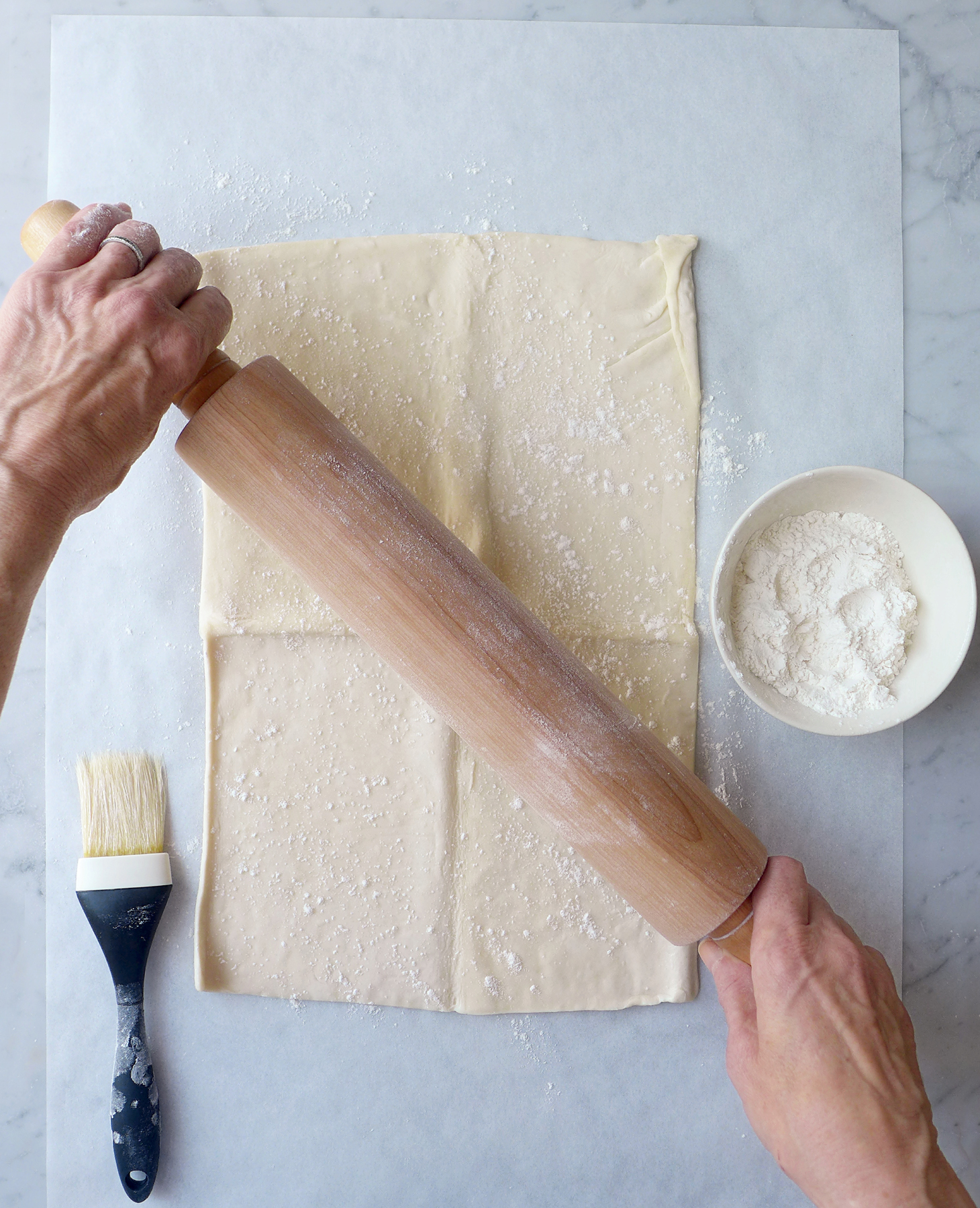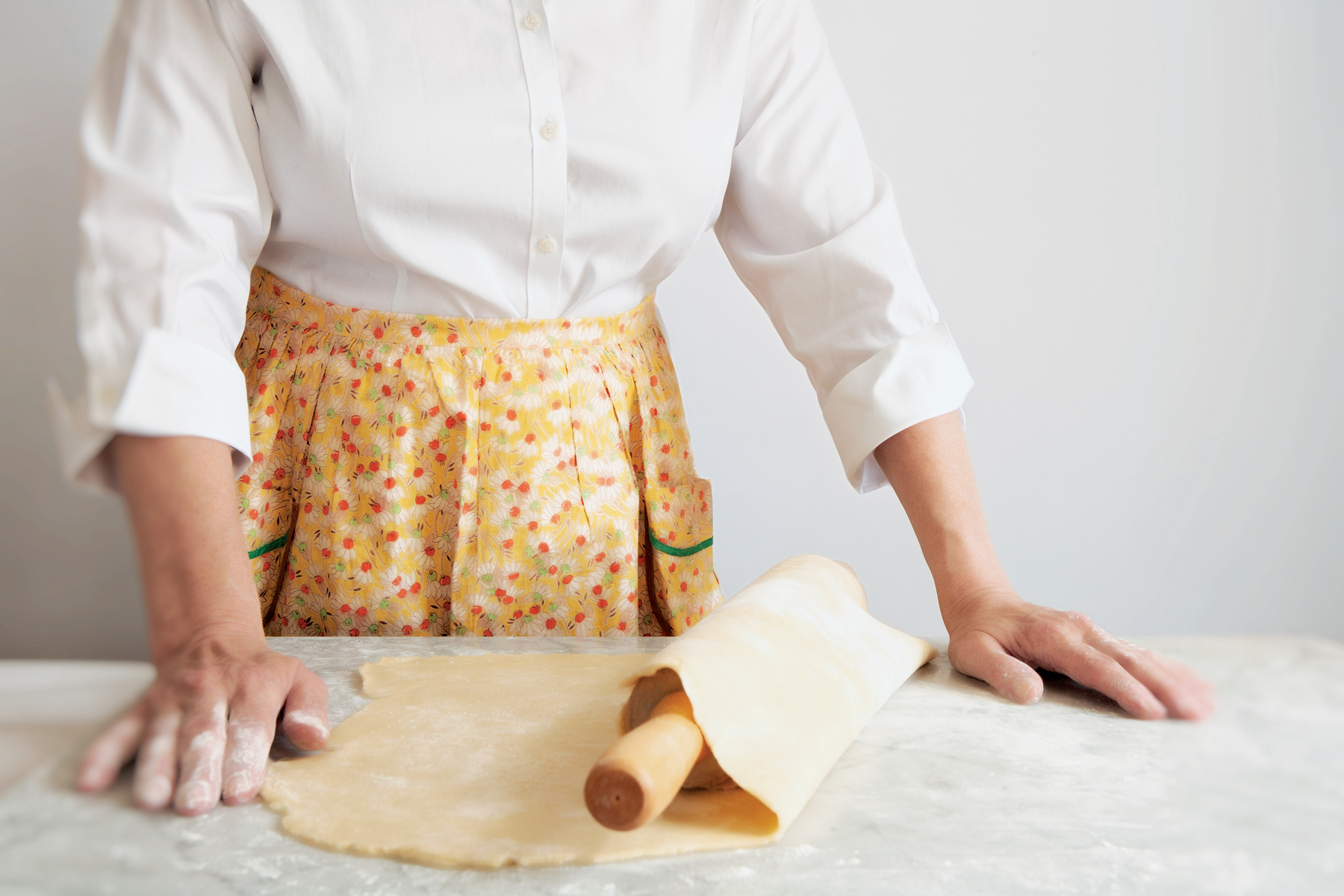If you wish to make an apple pie from scratch,
you must first invent the universe.
CARL SAGAN
Ive toted my signature sour cherry pie everywhere. Ive made this pie for summer parties and winter birthdays. Its been double-crusted, streusel-topped, or decorated with lattice or cutout stars. The filling is barely sweetened. The cherries are suspended in a glaze, clear and never gloppy. The bottom crust is crisp, not soggy. I won a blue ribbon with that cherry pie. I am that person who makes four, and more often six, pies for Thanksgiving. Until recently, every one of those pies has been unapologetically round. It never occurred to me to make a pie in any other shape.
In June 2016, while tossing around story ideas with Bonnie Benwick, my editor at the Washington Post, she said, How about a slab pie? A pie baked in a baking sheet. Even though I am an experienced pie maker, I feared slab pie. I wasnt sure I could successfully roll out even my own trusted pie dough into a rectangle large enough to drape over a baking sheet. As it turned out, it was easier than I thought, and in many ways, more straightforward than a round pie. For a few weeks, I became obsessed with slab pies. In time, I wrote a story for the Post with a recipe that tucked fruit and almond paste between two all-butter crusts (similar to Absolutely Peachy Slab Pie, ).
The story made a splash. We heard from pie makers far and wide sharing their admiration for the sheer functionality of a slab pie. Certainly, I wasnt the first to make a slab pie. Years earlier, Martha Stewart rolled out a slab pie on her television show. Theyve appeared in magazines and on blogs, and Pinterest is packed with slab pie images. It could be argued that baking sheet quiches, a staple of 80s cocktail parties, were the precursor to savory slab pies.
Its no wonder slab pies are welcome at potlucks, church socials, and neighborhood parties. In so many ways, there is no better contribution to a gathering than a slab pie. Slab pies are economical, easily transportable, and easy to portion out to serve a crowd.
Without even realizing it, I began to abandon the glass and ceramic round pie pans stacked in a drawer. The first slab pies I made were baked in a half sheet pan, 18 by 13 inches. Soon I realized that, while it might be the perfect size for a huge crowd, I wanted a slab pie that better suited the family dinner table. A different rectangular baking sheet, a quarter sheet pan 9 by 13 inches and just an inch high, fit the bill. And from that day forward, all my pies had corners: pie-squared.
I began to create recipes, playing with sweet and savory options. Over four months, I made 193 slab pies. At the end of my experimentation, after more than 70 pounds of all-purpose flour and nearly 60 pounds of unsalted butter, I had tweaked and nudged, tested and retested, until the crusts and fillings in the recipes that follow became utterly dependable and positively delicious.
To make a slab pie is not as straightforward as just doubling any old pie recipe. Its a different pie altogether. Right off the bat, the ratio is different: Its twice as much crust but only half as much filling. Along the way, I learned to approach pie making differently. I tweaked the seasonings, tinkered with the dough recipe, and learned to rely on a pattern of frequent chilling during the pie-making process.
Fruit pies were clear cutadd more fruit. Other sweet pies worked the same way, with more pudding, nuts, chocolate, or chiffon. The sweet pie recipes just needed a mathematical nudge.
Savory pies were different. Too much salt was catastrophic and too little was a crying shame. Seasonings had to be assertive. The fillings had to cook for just the right amount of time. And I wanted these mealtime pies packed with vegetables that were crisp and flavorful, not mushy and indistinguishable.
I set out to rework old favorites into Ham and Gruyre Slab Pie (). We learned to love pie for lunch, as though we were eating in a proper London pub.
Along with savory pies came savory crusts: cheddar-flecked, studded with caramelized onion, decorated with seeds, or with cheese scattered over the top. And then came the combinations. Thats the thing about pie. Its very adaptable.
Each recipe offers suggestions for Swaps for alternate crusts, filling ingredients, and toppings. Consider the Southern-Style Tomato Slab Pie () with a swipe of caramel raises this pie to a whole new level of indulgence.


